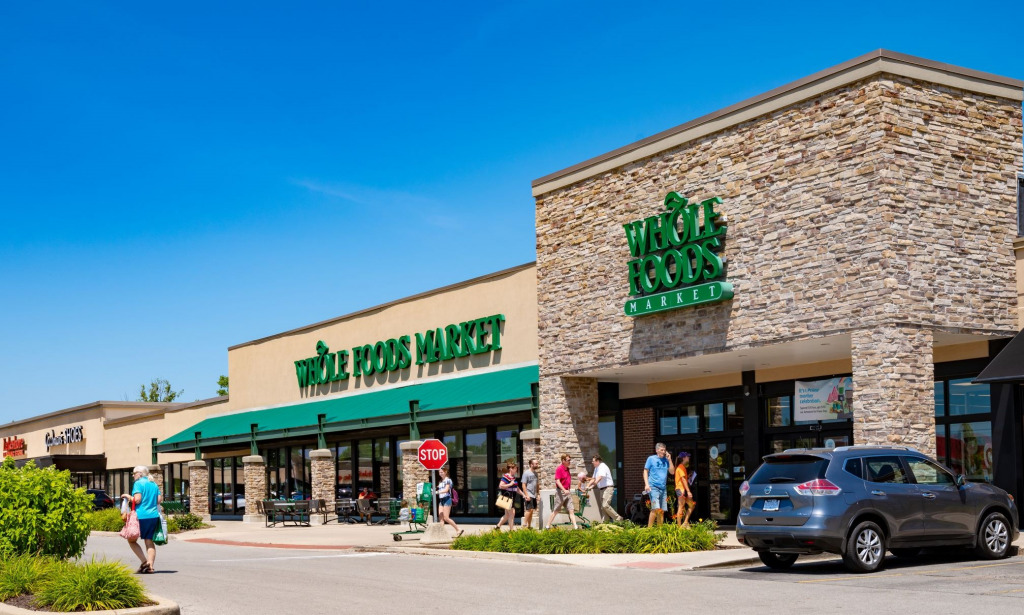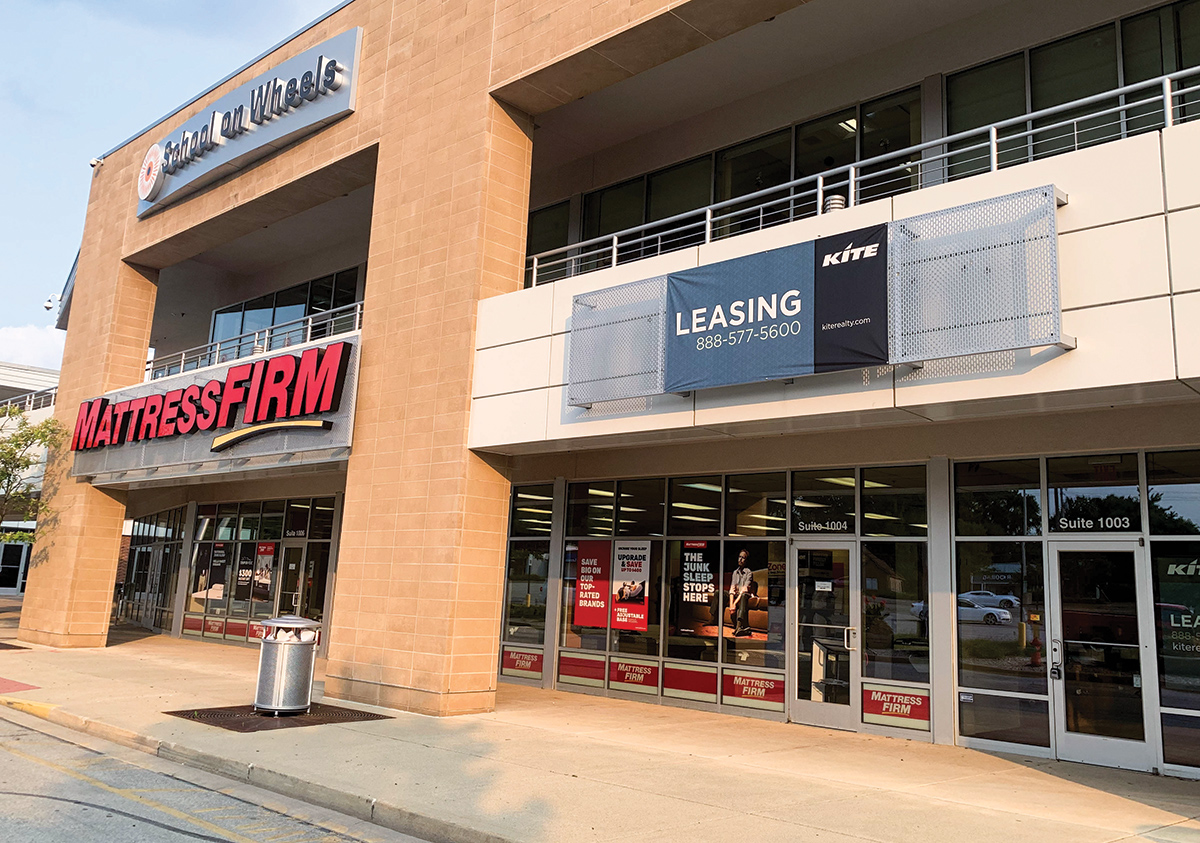Subscriber Benefit
As a subscriber you can listen to articles at work, in the car, or while you work out. Subscribe NowKite Realty Group Trust’s planned merger with an out-of-state competitor could create growth opportunities for the firm, as it adds markets and properties to its portfolio to provide new leverage for loans, lease negotiations and redevelopment opportunities.
But the Indianapolis company could also face at least some pushback from investors, largely because the acquisition follows a years-long effort to do what Kite has called “right-size,” with the company offloading dozens of debt-heavy properties since 2016.
The firm said Monday it plans to acquire suburban-Chicago-based Retail Properties of America Inc. in an all-stock deal that would put Kite among the nation’s top 10 retail-focused real estate investment trusts with a total value of $7.5 billion.
Modeled after mutual funds, REITs are public companies that see most of their revenue dispersed to investors rather than placed into their own coffers.
The substantial upsides for Kite include dozens of well-kept and newer properties and an expansion into two major retail metros—Washington, D.C., and Seattle—as well as other key markets like Phoenix and Southern California.

Doug McCoy, the Al and Shary Oak director of real estate at Indiana University, said he sees extensive benefits for Kite.
“This merger is really about positioning Kite well in its core business, which is open-air retail centers,” McCoy said. “In that regard, these two firms fit really well together, because they’re not duplicating properties, and each have footholds in attractive markets.”
The combined company will have about 185 shopping centers totaling 32 million square feet, composed of 83 Kite-owned properties and 102 centers from RPAI.
Kite earns 78% of its annual base rent from properties in 15 states in the South and West; a full 26% of its rental revenue comes from Florida. The combined firm will retain a stronghold in Florida and its other top market, Texas. In fact, 37% of its annual base rent would come from those states alone. But it will also get a revenue boost from Retail Properties-owned centers in New York and Maryland.
A grocery store is a tenant in at least 70% of the shopping centers collectively owned by the companies.

New opportunities
Roger Lee, a senior research analyst with Columbus, Indiana-based Kirr Marbach and Co. LLC, said the increase in property holdings gives Kite an avenue to additional growth, as it looks to cement its place as a major player in the market.
Kite could also leverage that growth into new opportunities and use that stronger portfolio to go to lenders and ask for better financing terms on future redevelopment projects.

Having a larger, more diverse portfolio “makes it easier to issue debt, just because it’s getting synergy from the two from the combined company,” Lee said. “Having a lot more shopping centers across a lot more geographical areas means groups are going to be much more willing to lend to them.”
That could even extend to Kite’s plans to redevelop Pan Am Plaza in downtown Indianapolis, a project that is proposed to include an expansion of the Indiana Convention Center and at least one massive, 814-room hotel. A second one is planned, but city officials have said construction will not take place until the downtown hotel market absorbs the rooms that will come with the first hotel.
Kite has indicated an interest in keeping the hotel project separate from its retail portfolio, but experts said the acquisition is likely to help in the firm’s efforts to secure financing for the development. The hotel alone is expected to cost up to $300 million. But those experts said shareholders likely don’t have the hotel project on their radar as part of the deal with Retail Properties of America.
“The main thing is, they are looking for ways to create value for their shareholders,” McCoy said. “But these things are kind of one-offs. It’s a positive, but the bigger picture is, they want to continue to try to improve themselves as a retail real estate investment trust, and that’s what they’re strategically trying to do when they bring these two companies together.”
Scale back, scale up
In 2019, Kite sold 14 properties it said were not core to its portfolio, for a combined $415 million. In 2017, Retail Properties of America sold 47 properties, for a combined $917.8 million.
“Kite leadership sees both their and Retail Properties’ holdings as being streamlined over the past few years, going into the pandemic,” Lee said. “Now, they’re on the other side of that and see it as an opportunity to start investing again.
“One of the reasons I think they feel more comfortable doing that as a combined entity is, they’ll have a little more scale and more diversification,” he added. “Both of their portfolios are in better shape than they were before.”


Alexander Goldfarb, a managing director and senior research analyst at Wall Street firm Piper Sandler Cos., said the rationale for Kite’s merger makes sense.
The firm and its CEO, John Kite, weren’t getting credit for their moves to offload circumspect properties because Kite is too small to draw larger investors, he said. With a larger portfolio, more buyers could want in on the stock.
But that doesn’t mean Kite’s leaders won’t have to navigate through some investor apprehension—particularly after the firm spent the early part of the last decade buying firms, only to sell off a large portion of those holdings to recoup losses.
“It’s in the execution,” Goldfarb said. “If they do everything they’ve done over the past year, it will be great. But obviously, if that doesn’t happen, that’s a big issue, right? That’s why the stock fell off Monday—because people aren’t confident enough to make that decision” to back Kite’s play.
Kite’s stock price dropped about 8% when the markets opened Monday, just hours after the firm announced the Retail Properties acquisition.
The dip coincided with larger Wall Street concerns related to the delta variant of COVID-19 that put the Dow Jones industrial average off by 700 points, or 2.1%.
Lee said he’s less concerned about the drop in Kite’s stock because it could be as simple as investors not wanting to pay an acquisition premium for Retail Properties. But, he added, that doesn’t mean some risk-averse stockholders aren’t hesitant.
“A lot of investors in the REIT might have wanted something super steady, and now some might assume that could change because there’s execution risk in integrating the two companies,” he said.

Acquisition history
Some of that hesitancy could be tied to Kite’s past acquisitions.
In 2014, Kite spent $1.2 billion to acquire Inland Diversified Real Estate Trust in an all-stock deal. That propelled Kite’s holdings from 77 properties to 130, but several of those properties were eventually put on the selling block as part of Kite’s effort to right-size.
Kite also acquired nine retail properties in 2013 for a total of $307 million—several of which it still owns.
“The big risk is that, if you look at Kite’s acquisition history … it’s not been ideal,” Goldfarb said.
“The outstanding item is the decision to get back into acquisition after all these years that Kite has been selling assets and becoming more streamlined. The initial reaction was, ‘Why is this deal different than the other ones that didn’t work out?’”
John Kite said Monday the deal “will propel [Kite] into the next level in every key portfolio metric.” The agreement followed weeks of discussion that concluded with Kite officials visiting about 90% of the properties in Retail Properties’ portfolio.
“We strongly believe that one plus one is five here,” he said. “The things that we’ve both done historically to get us to this point—it just matched up very, very strongly.”
He added that Kite has no immediate plan to sell any properties in either company’s portfolio once the deal is executed.
Goldfarb said it will “be on Kite management—really, John [Kite]—to tell people, ‘Look, this isn’t like our prior deals; this is very different’. That’s what they’re going to do over the next few months until the shareholder vote.”
Kite Realty has touted that the deal will make it the fifth-largest shopping center REIT in the United States. But it will also be the ninth-largest general retail investment trust by total value, based on IBJ research.
The largest is Simon Property Group, which is also based in Indianapolis.
Indiana University’s McCoy said having two of the top 10 publicly traded retail firms is a boon for Indianapolis. But he said it would only come into play if either of those firms make major moves toward growth.
“It’s another step forward—I don’t see it as a huge splash, but it’s definitely a positive” for the city, he said.
Lee agreed.
“I think it’s in Kite’s DNA to want to grow. I think this is a testament to local real estate experts being very, very strong players across the value chain of the industry,” he said.
Under the terms of the deal, each common share of Retail Properties of America will be converted into 0.6230 of a newly issued Kite common share. That represents a 13% premium to Retail Properties’ closing stock price of $11.52 on July 16. The deal is expected to close in the fourth quarter, pending approval from shareholders of both companies.•
Please enable JavaScript to view this content.
